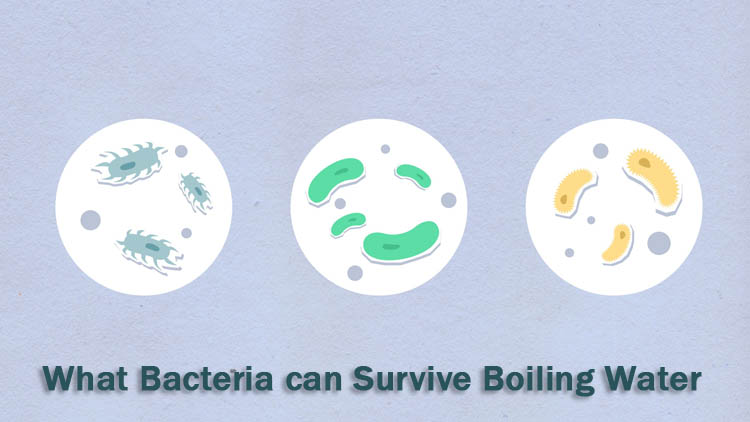Boiling is one of the most effective methods to make your drinking water microbiologically safe. This method kills bacteria, viruses, and protozoan that may cause serious health hazards.
But some bacteria can survive at a high-temperature, thus boiling your water may not work all the time. So what bacteria can survive boiling water?
Let’s find out that now!
What Bacteria Can Survive Boiling Water?
There are a few heat-loving bacteria that may survive even after you boil your tap water. But these pathogens can be killed if you heat the fluid at a specific temperature.
Bacteria that cause waterborne diseases such as E.coli, coliform, cholera, and salmonella will die if you boil your water.
Therefore, you need to make sure that you are boiling water at 212-degree Fahrenheit to kill all the germs.
How Do You Boil Drinking Water for Proper Safety?
Now that you know what bacteria can survive boiling water, you need to learn how to kill them.
Here is the proper method to boil your water to disinfect. In this way, you will be able to avoid all the waterborne diseases successfully.
Step One – Filter Your Water
If your water is cloudy or dirty, you can pass it through a clean cloth to make it clear. You can also use coffee filters or paper towels instead of cloth.
Step Two – Bring the Water to a Boil
Pour the water into a pot and turn on the stove. If you are boiling water in a large quantity, it may take from 5-10 minutes.
You need to make sure that the boiling point reaches 212-degree Fahrenheit. It would be better if you avoid guesswork and get a cooking thermometer to measure the accurate temperature.
Step Three – Cool Down the Water
When the water reaches 212-degree Fahrenheit, you can turn off the heat after a while. Then let it sit and cool down, and it may take 30 minutes.
Final Step – Store the Water
When the water has entirely cooled down, you can store it in a clean container for drinking afterward.
You can use a small amount of salt to get rid of the boiled water’s bland taste. Or you can pour the water back and forth from one clean container to another. This aerate process will improve the taste of your safe drinking water.
What are the Other Ways to Disinfect Drinking Water except Boiling?
Chlorine Bleach
Take some regular unscented chlorine bleach and add it to your water to kill the germs. According to the CDC recommendation, you should add ¼ teaspoon bleach per 3.78-gallon water.
After adding Chlorine to your water, wait for at least 30 minutes so the bleach can kill the bacteria to make the water safe.
Disinfection Tablets
If you don’t want to use Chlorine or any other chemical to purify your water, you can buy disinfection tablets. These tablets come in different strengths, and you need to add them according to your water quantity.
You can buy these tablets from your local drugstore or order online, whatever you prefer.
Final Verdict
It’s quite natural for us to ask what bacteria can survive boiling water to avoid various waterborne diseases. Hopefully, now you know how to prevent these bacterial contaminations by disinfecting your drinking water appropriately.
We talk about more food
Which Statement best Describes a Lifestyle with Healthy Eating Habits?, Food Contamination Caused by Pathogens can be Controlled by , What is The Best Way to Prevent Poor Food Safety , How Can a Food Handler Identify Pathogens, How do you identify a pathogen in Food?, what food does not support bacterial growth

